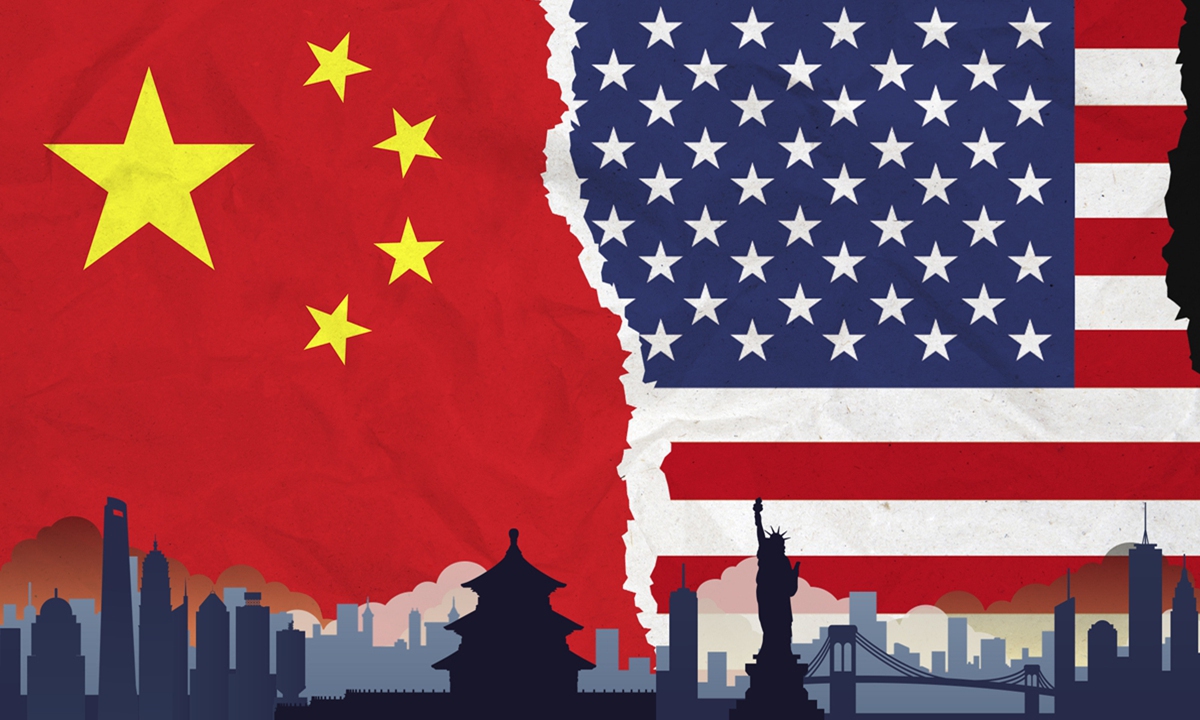
China-US Graphic: GT
A report published Thursday by the Center for Research on Energy and Clean Air (CREA), an independent research organization, has garnered widespread global attention. It reveals the different goals and policy trends in China's and the US' global strategies.The report states that China has the largest steel industry in the world. However, since the beginning of this year, China has yet to issue new permits for coal-based steel production, marking a turning point in China's efforts to achieve environmental protection goals. The report considers government policy to be a crucial driver for meeting emissions reduction targets.
According to research by the US non-governmental organization Global Energy Monitor, the scale of China's renewable energy projects under construction is "nearly twice as much as the rest of the world combined, and enough to power all of South Korea."
Making green energy a national development priority and mobilizing the entire country to meet targets explains why the Chinese have always emphasized that first and foremost, we must do our own things well.
In contrast, what is Washington busy with?
The recently concluded NATO summit in Washington had several key themes, including "war, weapons, military readiness, and sharing military expenses," from which one can easily sense the smell of gunpowder.
Washington is considering how to defeat Russia and how to extend NATO's spearhead toward Asia, thereby encouraging more member states to make more comprehensive preparations for war and buy more US weapons.
According to a report released by the Stockholm International Peace Research Institute, the US accounts for about 42 percent of global arms exports. Data shows that US defense spending is about $877 billion in 2022, accounting for about 39 percent of global defense spending.
David P. Goldman, a US economic strategist, stated on X on Friday, "We [the US] spent $7 trillion on forever wars, China spent $1 trillion on infrastructure."
Data from an analysis by Brown University's Costs of War Project shows that since the September 11 attacks, total US expenditure on the wars in Afghanistan, Iraq, and other related conflicts has exceeded $8 trillion.
This highlights the different policy orientations and priorities of the two countries' governments: China, through the development of green energy, demonstrates its commitment to sustainable development and environmental protection. The country has contributed to global peace and development by supporting the development of countries along the BRI. The US, through arms exports and support for its defense industry, has maintained the stable development of its own economy while safeguarding its security interests as a global hegemon, including geopolitical control and influence.
China's green energy push is not just about environmental management, it is a well-thought-out move aimed at positioning itself as a leader in future environmental industries. As the world grapples with climate change, Beijing's investments in solar, wind, and electric vehicle technologies may bring it significant economic and diplomatic advantages in the coming decades.
While the US defense industry has supported millions of US jobs and driven technological innovation, it has continuously exacerbated conflicts and arms races in turbulent regions. Its defense industry must rely on constantly emerging tensions to survive and expand. The economic benefits to the US have come at the cost of long-term global instability.
This is a conflict of two ideologies, as well as a conflict of two systems.
The problem now is that a country that constantly increases arms exports is accusing a country focusing on peaceful development of "undermining the international order" and being a "source of military threats."
It is common sense that weapons are for fighting wars. If a country's economy and its pursuit of hegemony rely heavily on manufacturing and exporting weapons, it becomes a potential creator of tensions or wars.
Imagine if, following the US logic, China were to emulate the pursuit of global and regional hegemony, using funds invested in clean energy and the BRI infrastructure for military development. Would neighboring countries, who rely on the US for security, be able to live as comfortably and contentedly as they do now?
The 21st century needs leadership from both China and the US, but this leadership must balance security concerns while providing solutions to future global development problems.
The world is rapidly changing, and what the US pursues in this change is key to determining whether it can remain at the forefront of global progress and prosperity.





